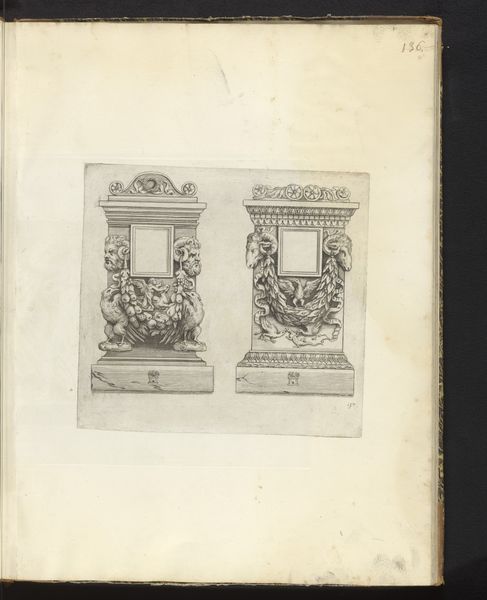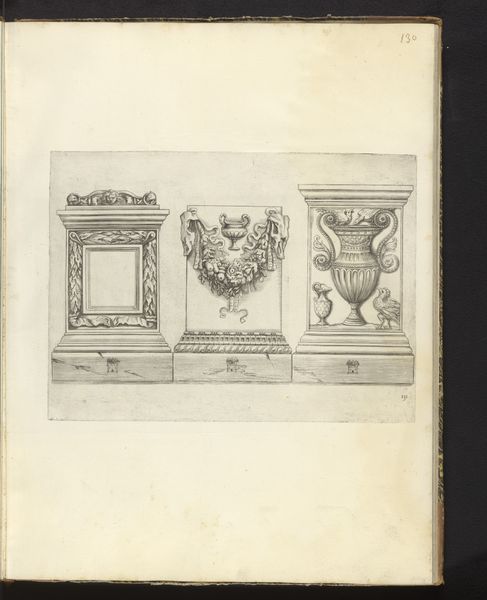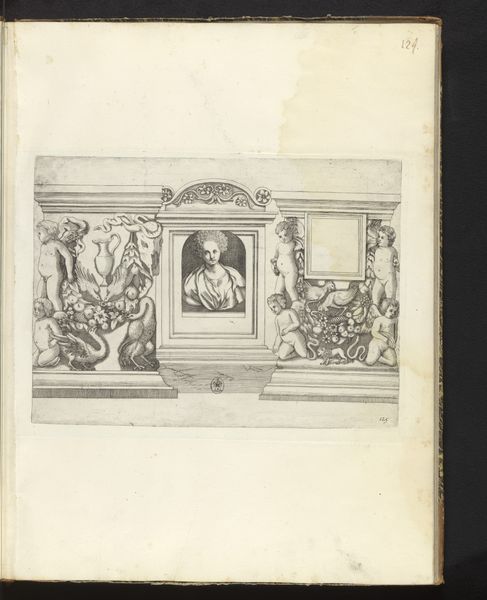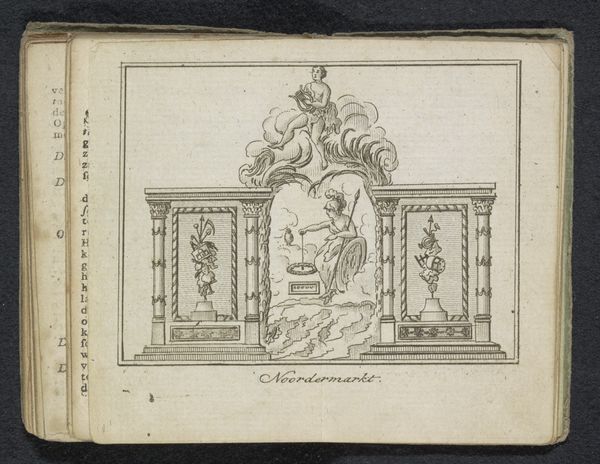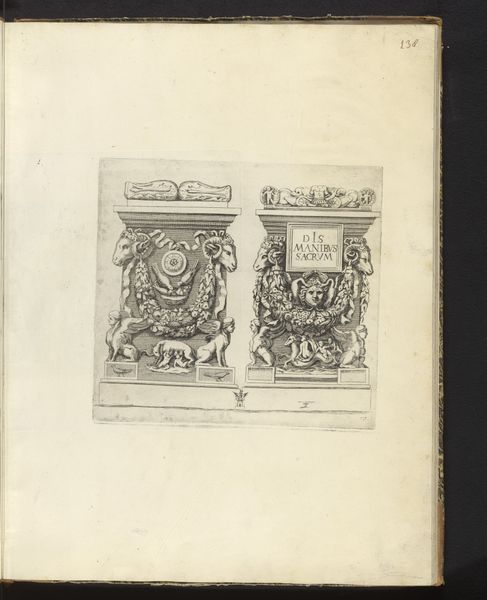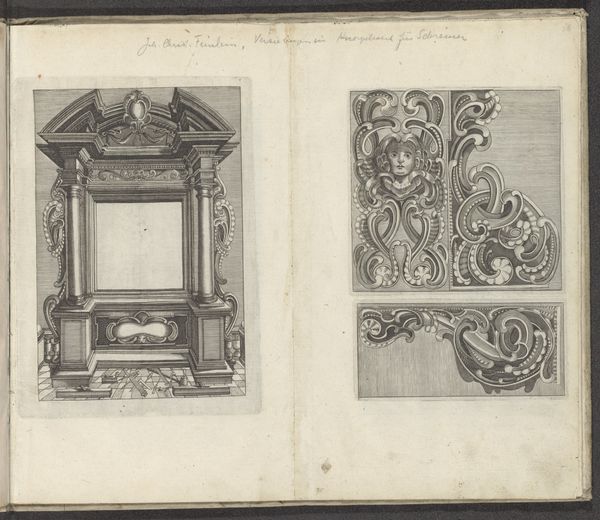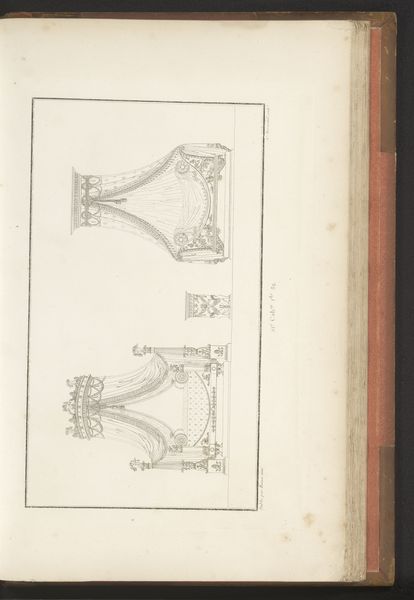
drawing, pencil
#
drawing
#
aged paper
#
toned paper
#
light pencil work
#
sketch book
#
classical-realism
#
11_renaissance
#
personal sketchbook
#
geometric
#
pen-ink sketch
#
pencil
#
ink colored
#
pen and pencil
#
sketchbook drawing
#
sketchbook art
Dimensions: height 242 mm, width 225 mm
Copyright: Rijks Museum: Open Domain
Curator: What strikes me immediately about this drawing is the artist’s concern for the articulation of form using line alone. The precision in rendering these architectural elements is remarkable. Editor: I see a stage for memory, perhaps a tableau vivant representing the bountiful earth. Curator: You’re responding to "Two Pedestals with Festoons" by Bernardo Vaiani, created between 1636 and 1647. It is a study in pencil and ink. Editor: The garland imagery and the bulls create a visual feast. The pedestal is weighty. Do you think this image holds some political, spiritual, or mythological symbolism? Curator: Perhaps, but consider the sheer formal skill on display. Look at how Vaiani uses hatching to imply volume, the careful consideration given to the capital details atop the columns... The relationships established by vertical columns on one and the curves of festoons on the other give structure to the composition. Editor: Yes, the contrast is compelling, particularly given the lack of colour; each element reinforces the other and holds the viewer’s eye within. But beyond form, don’t you find this evocative of classical Roman art? This speaks to a culture's desire to associate itself with former glory, a form of power projecting backward and forwards. Curator: I concede the cultural link. These are common architectural motifs derived from antiquity. But the way he has chosen to focus primarily on the geometric construction – the pure Platonic forms underlying these details – seems more crucial. Editor: So you believe the form is of interest while the images of cattle and garland are just placeholders. The power of festoons should not be downplayed as they frequently celebrate victory. They’re hung to adorn both people and buildings, they celebrate an event, a person, a historical marker... the garlands add joy. Curator: Maybe... but for me, the true merit lies in Vaiani’s masterful application of draughtsmanship, not an engagement with historical symbolism. It is the lines themselves creating volume and form on aged paper. Editor: I leave, admiring the technique but haunted by a desire to see beyond what's immediately apparent and wondering what occasions of joy these images may be referring to. Curator: For me, it's enough to acknowledge the artistic skill on display and enjoy a moment captured from the past.
Comments
No comments
Be the first to comment and join the conversation on the ultimate creative platform.


